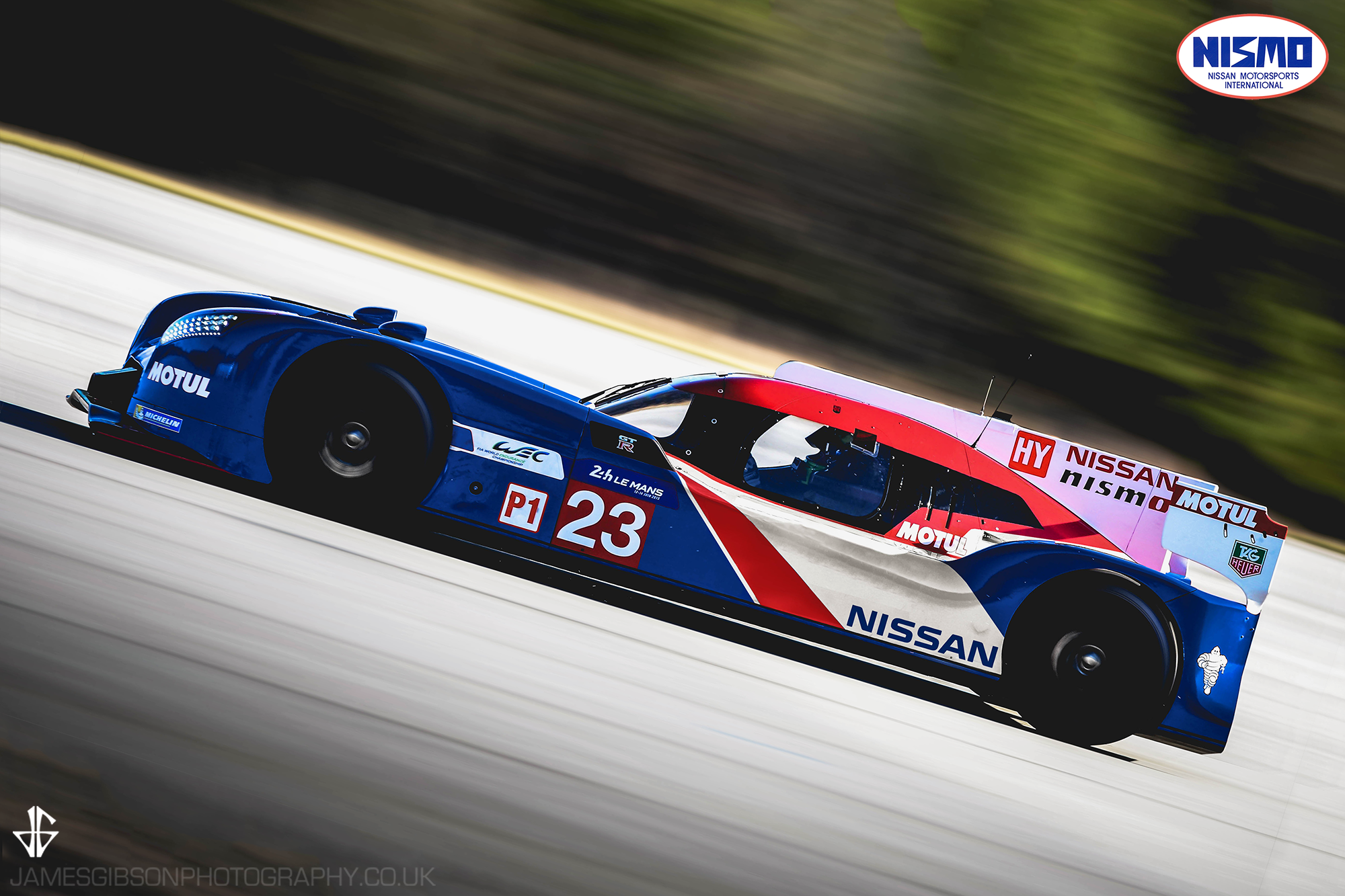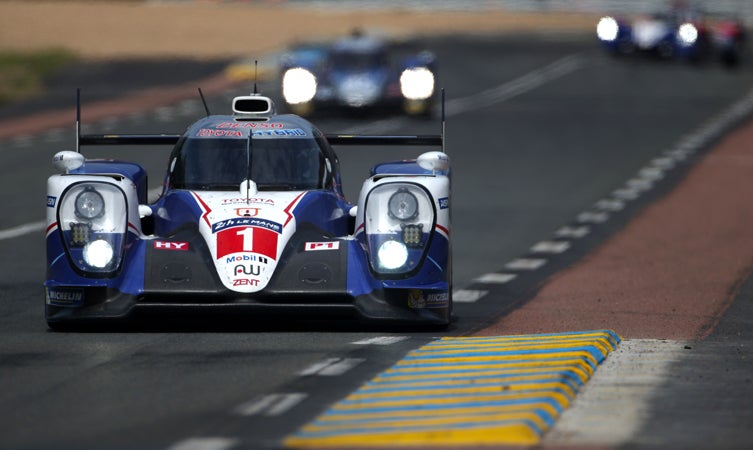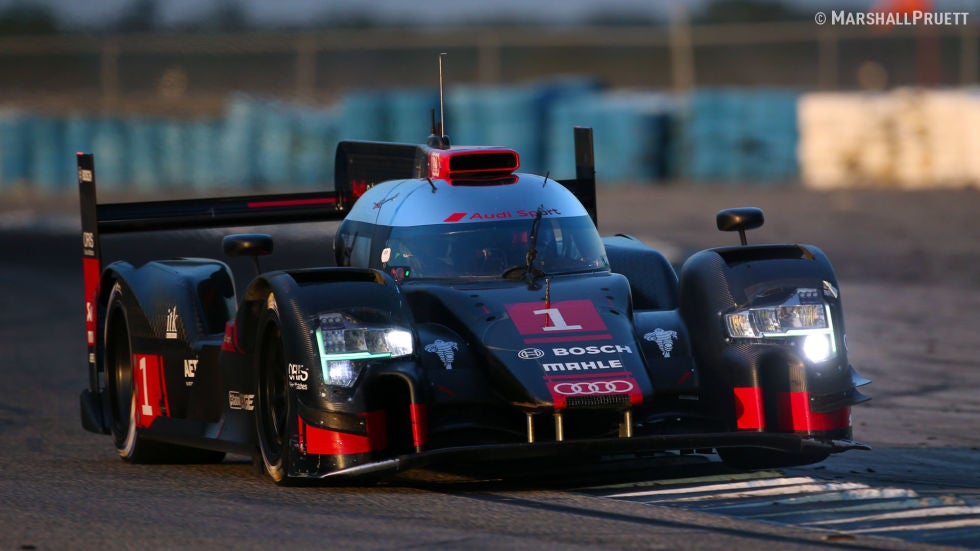 by "Herr Quattro - Has a 4-motion" (herrquattro)
by "Herr Quattro - Has a 4-motion" (herrquattro)
Published 02/16/2017 at 01:40
 by "Herr Quattro - Has a 4-motion" (herrquattro)
by "Herr Quattro - Has a 4-motion" (herrquattro)
Published 02/16/2017 at 01:40
Tags: Nissan GTR LM
; LeMans
; Deadhorse
STARS: 0

Sometimes it feels like this is the punchline that fell flat. The FWD race car, that promised to throw a wrench in the WEC, and open the door to FWD in true competition. Except it was more pitiful then Manor F1, struggling to tread water. This was the most hyped up example of FWD, and that FWD is no longer Wrong-Wheel-Drive.
This is the ode to the car that never lived up to its hype, and why it had the possibility to shake up the entire racing world. Instead, time and corporate heads shut it down before it even got a chance to redeem itself.
It’s been 2 years, but the recent article about Nissan pulling its racing efforts out of North America made me remember this car...
Like many, even while I write this article trumpeting the merits of the brilliance of it, I HATE the Nissan GT-R LM. It is everything a hardcore prototype is not. Hell, it is everything a race car is not. A front(ish)-engine, FWD, hybrid, and a V6? This is one of those cars that I ultimately came very much to love and hate. For the same reason people get mad at people when they cut up vintage Porsche’s to throw absurd and ghastly RWB fenders on it. Because fuck people who say what I can and can’t do with a car.
There is something about a car that felt like it was built from the ground up to piss off the traditionalist. Who says what a race car has to be mid engined and RWD? and Why is it Front engined and FWD? Fuck you that’s why.
Ultimately, I see that this was supposed to be the big middle finger from Nissan saying screw the Mid engines, and everything that has been tested and proven.
If had just lived up to its Specs, it would be a legend. A 1200HP prototype, in a field where the fastest car is running ~900?
But it never got a chance to live up, it was a stillborn forced to dance on puppet stings. The results have doomed the car to a lifetime of internet mockery, and an unfortunate footnote in the history books.
Make no mistake, I am not a Nissan fanboy. While I was watching the race, I was screaming about Audi pitting early, and the nose change and how it cost them the race.
Even as an enthusiast, Nissan has never been a brand worth mentioning. I was also born in 1999, and I personally I do not consider Nissan an enthusiast brand.
I was too young to remember or care about the release of the 350z, and I was JUST old enough to sorta know remember the R35 just practically popping into exsistence as a sub-$100k supercar killer. But, I still didn’t understand why it was a big deal. Point being, I do not understand the enthusiast love. I love the R31-R34 GTRs, Z32, 240, 510, and 720, but I don’t think Nissan is no longer that company, and could never make a worthy successor to any of those cars.
I associate all of those listed above with Datsun, even if they were made afterwards (yes, including the Z32, and R34. I have called it the Datsun GTR R34 many times because I was probably dropped on my head.)
But onto the Nissan GT-R LM.

A FWD racecar hybrid? What the hell was the engineer smoking when they thought of that? And they couldn’t even bother making it look cool. The headlights alone remind me of a demented bug eyes with mascara. Not like a VW beetle bug eyes, but like an ugly fly. It is high on the list of contenders for the most awkward looking race car to ever race at LeMans. That includes the Deltawing, and the batshit Chaparral designs.
But, it is not the failure everyone says it is, and doesn’t deserve to essentially be the laughing stock of race cars.
The car was never given a chance. I am a hardcore WEC fan, and an even harder core Audi fan (yeah I know, RIP me), not to brag I read the entire design rule book for fun. And because I’m a nerd, and I was curious how it worked but I digress.
For the uninitiated, LMP1-H is a complex black forest of black magic voodoo of curiously worded regulations. It almost like the WEC and FIA wanted designers to push the limits and toe the vague line of legality.
In an era were racing rule books are getting a volume thicker every year, WEC has crafted a system able to have unique solutions. They are loose enough, that they actually have allowed the possibility for a race car anti-Christ to be created.
Sometimes the rule book feels like a strategic turn-based game. Each year is one manufacture daring the other to try and one up them.
And yet, each manufacture plugs and plays with the rules until they have something that suits there strategy to win.
The car’s are interesting and diverse, and yet, the race is relatively close.
Just like how the diesel Audi’s have a smaller fuel tank in comparison to their more hungry gasoline competition. And yet, it has a lower fuel flow rate, as opposed to those same gasoline competitors. The Audi R18 is slow overall, but it can go longer. The time the R18 saves from not pitting, is made up for by the petrol cars being faster.
Similarly, there are several branches/classes manufactures could go down with the energy system. Their are currently 4 ‘classes’: 2MJ, 4MJ, 6MJ, and 8MJ. They are based off the maximum amount of energy a hybrid system is allowed to assist per lap.
Each class comes with its own benefits and detractors, and each class forms the basis for the cars chassis. Each class must be used throughout the season, so the selected ‘class’and strategy are very much intertwined.
To elaborate, a car in the 6 MJ class, is not required to use 6 MJ of power in a lap. The classification is based off the maximum power the car is allowed to use at any given time. So a car rated for 6 MJ, can use anywhere between 0 MJ and 6 MJ per lap. Inversely, the classification does not directly dictate the size of the battery. A 4MJ car, and a 8MJ car can each have a battery capable of ‘storing’ 24MJ of power. However, the 4MJ car can only UP TO 4MJ of that power during a lap, while the 8MJ car can use UP TO 8MJ. At maximum usage, and without regeneration systems, this would lead to the 8MJ car discharging its battery in 4 laps. Whereas the 4MJ car at full tilt could go 6 laps on the same charge.
So, consequently, the 8MJ system would require a 36MJ battery in comparison to last the same amount of laps without regeneration.
The 2015 rules was also the last year of no regulated maximum output of released energy. This essentially allowed teams to set the discharge rate at whatever they wanted. A team could essentially allow a car to use all 8 MJ in one go, by “boosting” the electric motors. In essence, a LMP1 car classified for 8 MJ, can use 8 MJ of energy per lap, while ‘released energy’ is similar to a engines fuel flow. As opposed to the old F1 KERS system, the electric assist rate cannot be changed by the driver on the fly.
As with most rules in LMP1, the FIA has carefully constructed the regulations to give certain benefits and detriments to each ‘class’, to balance them out and allow manufactures to essentially plug and play.
Their are only 3 factors directly controlled by the regulations in regards to the systems. The first regulates the allowed fuel rate to the engine. Higher energy systems are restricted to a lower fuel flow as opposed to the lower level energy systems. The second factor is the maximum amount of fuel “energy” available per lap. The third factor is the maximum capacity of the fuel tank. This only impacts the Audi R18, as the gasoline engines fuel capacity remain the same regardless of class.
Outside of the regulations themselves, their are several engineering detriments to a higher hybrid system classification. Higher class hybrid systems require a more complicated energy regeneration system, capable of recouping more of the lost energy.
The largest benefits to the hybrid include better fuel efficiency. The fuel tank size remains constant regardless of the system, and with the added benefit of lower fuel flow rate, the higher energy cars can stay out longer. Electric motors are allowed to be placed on the non ICE powered axles (i.e. the rear axles on the GT-R LM, or the more traditional front axle for everything else).
The other large benefit is the instantaneous torque of the electric motors. Unfortunately, this is not a large factor, as the electric motors can not be powered below 75 MPH. That being said, the acceleration difference quickly becomes apparent under hard racing .
The 2016 season rule changes heavily revised the fuel flow and maximum amount of fuel energy allowed in a lap, so the following information is all from the 2015 season.
Each car that raced in the 2015 LeMans race belonged to a separate class, so each car was designed under slightly different set of regulation.
!!! UNKNOWN CONTENT TYPE !!!

When introduced in the 2014 season, the 919 Hybrid was the first LMP1 car to run in the 8MJ (gasoline) class. Staying in the 8MJ class for the 2015 season, the car had a limited maximum fuel flow of 88.5 kg / hr. (31.1 gal / hr). The 919 Hybrid was also limited to a fuel energy limit of 138 MJ, for a maximum amount of 146MJ of energy available per lap.
However, it should be noted that the winning 919 traveled 5,382.82 km (3344.7 mi.) during the race, pitting 30 times. Like the other hybrid gasoline classes, the Porsche has a 68.3L (18 gal) fuel tank. The winning 919 used 1896 L (500 gallons) of fuel.
The Porsche 919 regeneration system was specifically designed to regenerate 8MJ of energy over the course of a single lap of LeMans, partially negating the need to conserve battery power.
Over the course of the 24 hour race, subtracting the time spent in the pits, the winning Porsche had an average fuel flow rate of 84.6l/hr (22.3 gal./hr).
It should be clarified that this does not mean the Porsche 919 uses 146 MJ of energy every lap, but rather, that is the maximum ‘legal’ amount of energy available in a lap. As shown by the fact that the winning 919 did not even come close to driving at full fuel flow rate.
!!! UNKNOWN CONTENT TYPE !!!

For the 2015 season, the Toyota TS040 ran a 6MJ (gasoline) system. The 6MJ class regulates the maximum fuel flow to 89.5 kg / hr (31.8 gal / hr). The TS040 is also limited to a maximum of 137.5 MJ of fuel energy, leaving it with a maximum potential energy of 145.5 MJ.
!!! UNKNOWN CONTENT TYPE !!!

As the only diesel powered car, the Audi R18 is not only under the 4MJ system, but also under the diesel, which has a different set of fuel rates then the Gasoline. For the 2014 season, the Audi R18 was classed in the 2MJ class. However, for the 2015 season the updated Audi primered in the 4MJ class.
The 4MJ diesel system restricted fuel flow to 79.0 Kg/ hr (24.5 gal / hr). The Audi R18 was limited to a maximum diesel energy of 134.8 MJ, with a total of 138.8 MJ of ‘legal’ energy allowed per lap.
Hypothetically, a 4 MJ gasoline hybrid would be limited to 91.9 kg/hr (32.6 gal / hr). A 4 MJ system engine would also be limited to a fuel energy limit of 143.3 MJ, for a grand total of 147.3 MJ of potential energy per lap.
!!! UNKNOWN CONTENT TYPE !!!

So this brings us to the Nissan GT-R LM. It has been widely reported that the Nissan was initially announced to be equipped with a 8MJ system. I do not have the exact specifications of the regeneration systems in play, so far most publications have primarily pointed to the brakes on the front axle being the main source of the regeneration.
I have to assume the cars main source of regeneration is from that front brake based system. As with nearly every other car, brakes are nearly always biased at least slightly to the front. The added weight of the engine and battery up front places most of the weight up front as well. During the race, Nissan engineers reported the front brakes operating at 1000 degrees, without issue.
While I cannot speak for other teams, I presume since the fact that it was reported on and noteworthy makes it much hotter then most of the competitors. And the fact that only the Nissan had reported on its brake figures. These numbers are close to those experienced by F1 cars.
Unlike the F1 brakes, which only have to last a single 2-3 hour long race, the Nissan brakes had to survive several long stints before being replaced.
The hybrid system was such an integral part of the cars purpose, and most and being able to leave the ICE powering the front wheels, while the electric powered the rear.
A hybrid system with so much emphasis on it would have required a large battery and a complicated regeneration system, which would in turn allow the Nissan to consistently use 8MJ of energy per lap.
In the concept 8MJ system, it was reported the twin turbocharged V6 with the intended 8MJ system was reported of making 1250 HP.
In comparison the Porsche 919 has an estimated 900 combined horsepower, while weighing only 5 kg (11 lbs) less.
!!! UNKNOWN CONTENT TYPE !!!
It comes down to terrible management, and delays. As seen in the fact that it didn’t show up to Silverstone or Spa, due to a failed crash test.
But the biggest reason it failed was the fact that Nissan was unable to bring a 8MJ system to fruition before Le Mans. FIA dictates a LMP1-H car, must be AT LEAST equipped with a 2 MJ hybrid system. The Nissan was equipped with a 2MJ system, that was left disconnected.
That was a heavy battery, regeneration system, and motors serving nothing but dead weight. It would’ve been better for the Nissan to have lead weights, as you can adjust the location for best results.
Overall, the Nissan had access to comparatively little energy, in a chassis that was meant to showcase the technology...
!!! UNKNOWN CONTENT TYPE !!!
What it comes down to, Nissan quit early. The GT-R had and still is a potential winner. I don’t mean to beat a dead horse, but I can’t help but feel awful for the men and women who invested so much blood, sweat, and tears into a different concept that would simply fall so flat, Nissan led it into the pasture and shot it right between the ugly headlights.
Herr_Quattro is not a writer, but he put a lot of effort into this, so might as well put a little bio, right? Audi LMP1 fanboy. Has an unhealthy obsession with his 2004 Passat Wagon, and probably with LeMans. He read the rulebook for fun.